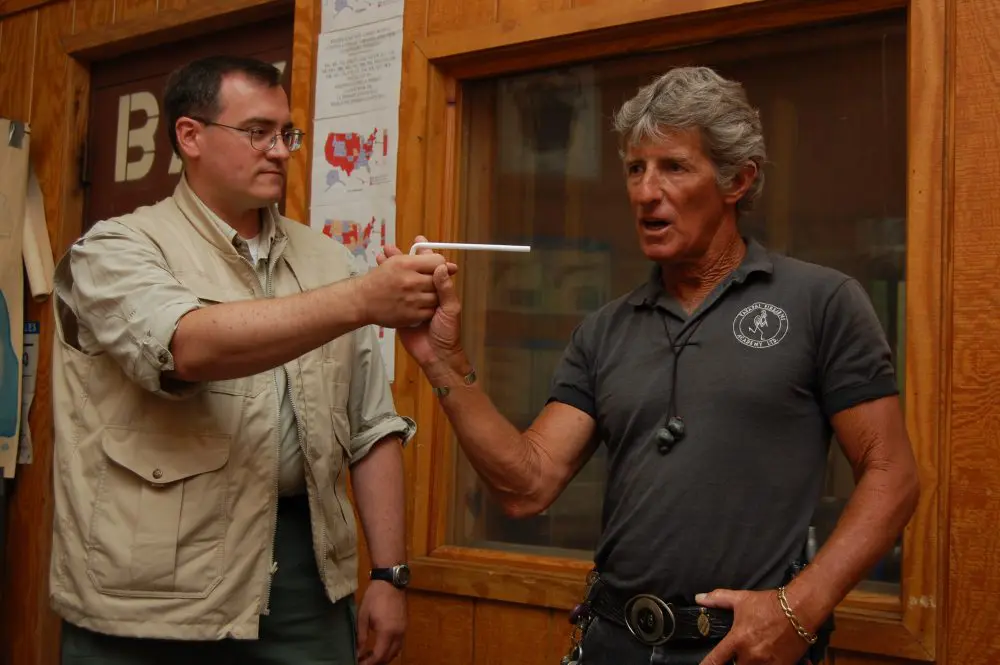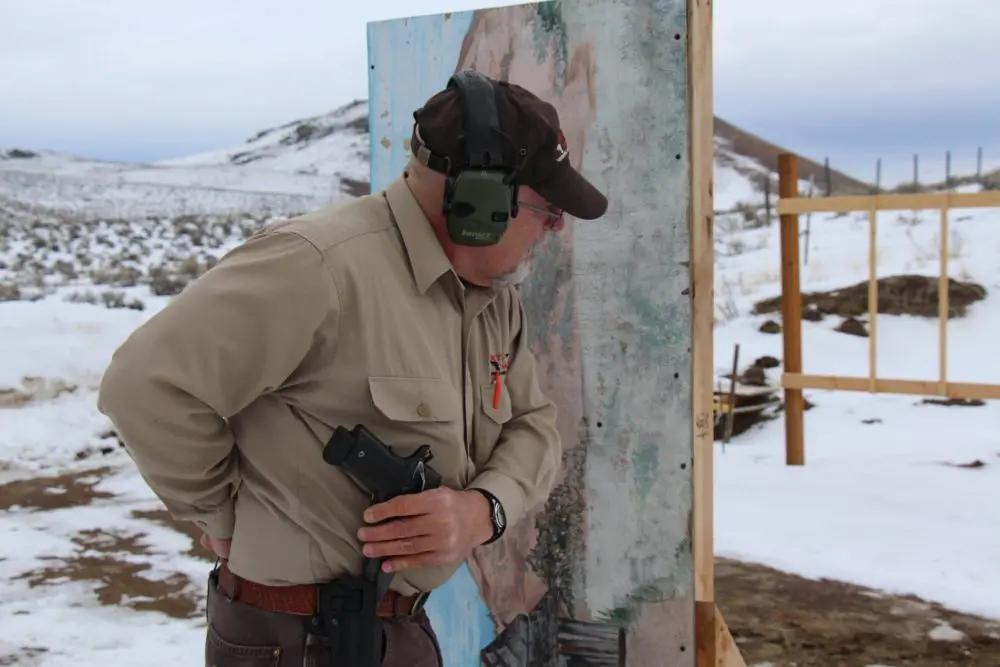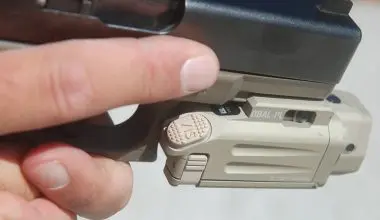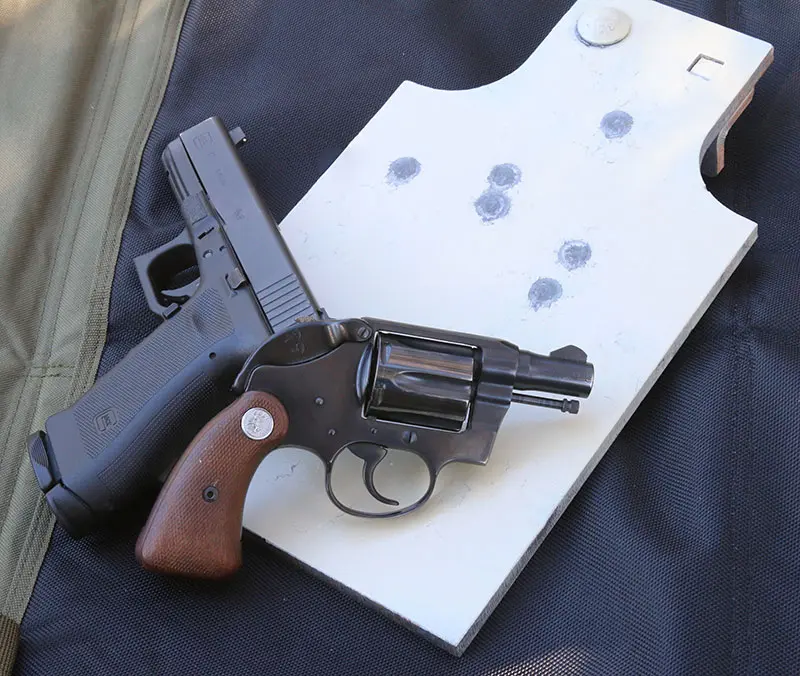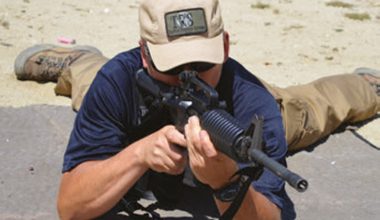YOU need a gun for a gunfight. And even though this is overstating the obvious, many is the time that someone has had a firearm in his possession but not been able to access it when needed. Obviously the gun needs to be in your sweaty little paws when the fight starts, or you’re on the losing end of a one-sided gunfight.
And therein lies the rub. Because while many people have guns, a large percentage of these folk can’t get to them in a realistic time frame if needed— even if the weapon is attached to their carcass when their world turns into a brown mist. What this boils down to is that if you don’t practice accessing your weapon from its position of rest until it’s second nature, you probably won’t last through the first two notes of the death opera.
Ho-hum, you say. Here we go again, with Mister Pessimist and his party pooping. Well, not quite. There’s a huge difference between a pessimist and a realist. A pessimist sees the glass as half empty, while a realist permanently leaves an umbrella in his car in preparation for a potential rainy day. Paranoia is not a healthy state of mind, but you can live with it if needs be. Overconfidence—or a false impression of your own ability—can get you killed.
You see it all the time on a firing range. Shooters standing by for an audible “go” command, sweaters and coats tucked inboard of a low-slung hip holster, beady eyes locked on the desired impact point of a mammoth stationary target, and feet firmly planted in a recently shooter footexcavated hole designed to give perfect belt-buckle-to-belt-buckle target alignment. This is going to work like a charm on the street….
Even more disillusioning is watching these trainees leaving the range at day’s end. The pistols are switched to a different holster—often located on a body area other than that used on the practice range—and the girlie “training” ammunition is substituted for uncontrollable hand-howitzer “defense” loads. Or the final straw: The “defensive training” pistol is exchanged for a minute “concealed carry” version the size of a flea’s ear and constructed from some super-secret lightweight material scooped off the surface of the Martian landscape. “Much more comfortable for concealed street deployment, don’t you know?”
Sure it is. Of course you’ll never be able to access it in an emergency, and won’t hit an elephant’s derriere at ten paces even if you could get your grubby mitts on it, reacting to the visual stimulus of an unforeseen for-real physical threat. There are none so blind as those who will not see—and visual stimuli slow down your for-real reaction time markedly relative to auditory practice range commands.
The bottom line is that the criterion isn’t so much what weapon and/ or ammo combination happens to be your choice for personal defense. The crux is that, apart from excelling in the fields of marksmanship and weapon manipulation, you have to be able to access the gun, or all is for naught. No gun, no fun.
And while this isn’t that big a deal, it does require some forethought and physical preparation. The objective is to be able to access a gun under most foreseeable circumstances. For example, that “perfect” inside-thewaistband holster may be useful only if you’re standing up and unencumbered by a mandated dress code. Ergo, if you’re seated in a restaurant when it is besieged by a trio of armed thugs, you’re probably going to wind up as part of the menu. In this example, an ankle rig may be a better—or additional— alternative.
No, you can’t cover all the bases. Especially in this wonderful new world of spineless sycophants, where criminals and liars dictate when and where the Common Man can and cannot have access to defensive firearms, one has to go with the flow. So you cover your bases as best you can, your decisions governed by several factors: a self-accounting of when, where, and how you’ll most likely need a defensive firearm; concealment requirements and/or carry positions, dependant on issues such as clothing and whether deploying in a vehicle; and last but not least, working within the legalities of when the Olympian Gods in their sanctimonious opinion decide whether or not you’re “allowed” to possess a firearm for self-defense.
Having considered these factors, you then make your decision on the what, the when, and the where—and then practice, practice, practice. The necessity for repetitive practice in specific techniques—in this case, acquisition of the required firearm—is obviously to ingrain reflexive ability, so you don’t go through either timeconsuming physical fumbling or the mind-numbing “I-know-I’ve-got-onesomewhere- if-I-could-only-remember- where-I-parked-it” routine.
And it is absolutely vital to realize that every drawstroke/presentation of a firearm from its “nest” requires different physical motions than those employed when pulling it from a different location. In other words, withdrawing a pistol from a shoulder or cross-draw holster demands a different initial support- hand location to that of a strongside belt holster. If you don’t take this into consideration and practice a safe technique relative to a specific holster, handbag, or fanny-pack system, it’s only a matter of time before you shoot yourself or an innocent bystander.
The same rule applies to specialty holsters such as those designed to secure the weapon to vehicles and home or office furniture. For the successful conclusion of a gunfight to be achieved, it is essential that the physical access of the weapon be second nature and reflexive. The only thoughts going through the gunfighter’s mind should be strategy, tactics, and shot placement should the delivery of projectiles be required.
Yes, you need a gun for a gunfight.
What you don’t need is a selfinflicted bullet wound before the fight starts.
